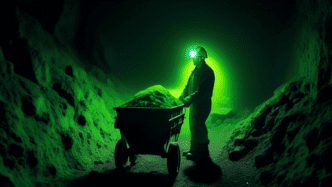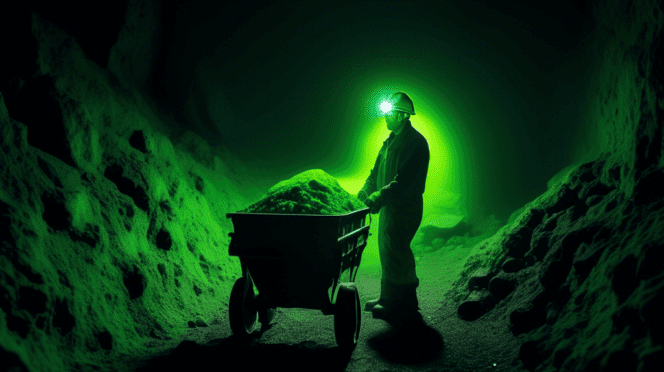Table of Contents Show
The Current Landscape of American Uranium
The U.S. uranium industry faces a complex and evolving landscape. Following a period of decline, there’s a renewed focus on domestic uranium production due to several key factors:
Geopolitical Concerns and Energy Security
Global events, particularly the war in Ukraine, have underscored the importance of energy independence and security. Reliance on foreign uranium sources, especially from politically unstable regions, poses a significant risk. The push for domestic uranium strengthens energy security and reduces reliance on potentially unreliable suppliers.
Nuclear Power’s Role in a Clean Energy Future
As the world grapples with climate change, nuclear power is gaining recognition as a reliable, low-carbon energy source. Nuclear reactors require uranium fuel, creating a growing demand that the domestic industry is poised to meet. This demand is further amplified by the development of advanced nuclear technologies like small modular reactors (SMRs).
Government Support and Policy Initiatives
The U.S. government has shown increasing support for the domestic uranium industry. Initiatives like the establishment of a national uranium reserve and the Department of Energy’s willingness to purchase domestically produced uranium demonstrate a commitment to revitalizing the sector. These actions aim to create a stable market for U.S. uranium producers and encourage investment in new projects.
Challenges and Opportunities
Despite the positive outlook, the American uranium industry faces challenges:
Competition from Foreign Suppliers
The U.S. uranium industry competes with established international producers who often benefit from lower production costs. This competition can make it difficult for domestic producers to maintain profitability.
Environmental and Regulatory Considerations
Uranium mining and processing activities raise environmental concerns, requiring adherence to strict regulations. Balancing environmental protection with economic development remains a crucial challenge for the industry.
Infrastructure and Workforce Development
Revitalizing the U.S. uranium industry necessitates investments in infrastructure and workforce development. Modernizing existing facilities and training a skilled workforce are essential steps toward sustainable growth.
However, these challenges also present opportunities:
Technological Advancements
Innovations in mining and processing technologies offer the potential for more efficient and environmentally friendly uranium production. Embracing these advancements can enhance the industry’s competitiveness and sustainability.
Public Perception and Education
Addressing public concerns about nuclear energy through education and transparent communication is crucial. Highlighting the safety and environmental benefits of nuclear power can foster greater acceptance and support for the industry.
Collaboration and Partnerships
Collaboration between industry stakeholders, research institutions, and government agencies can drive innovation, address challenges, and ensure the long-term success of the American uranium industry.
The Road Ahead: A Vision for the Future
The future of American uranium is promising, with the potential to contribute significantly to energy security, economic growth, and a clean energy future. To realize this potential, a multifaceted approach is necessary:
Continued Government Support
Maintaining supportive policies and initiatives is crucial for fostering a stable and predictable market environment, encouraging investment, and enabling the industry to compete globally.
Investment in Innovation
Promoting research and development in advanced mining and processing technologies can enhance efficiency, reduce environmental impact, and improve the overall competitiveness of the industry.
Workforce Development and Education
Investing in training programs and educational initiatives will ensure a skilled workforce capable of supporting the industry’s growth and technological advancements.
Community Engagement and Environmental Stewardship
Building trust with local communities through open communication and responsible environmental practices is essential for the industry’s social license to operate and long-term sustainability.
By addressing challenges, embracing opportunities, and fostering a collaborative approach, the American uranium industry can reclaim its position as a global leader, contributing to a secure and sustainable energy future for the nation.













